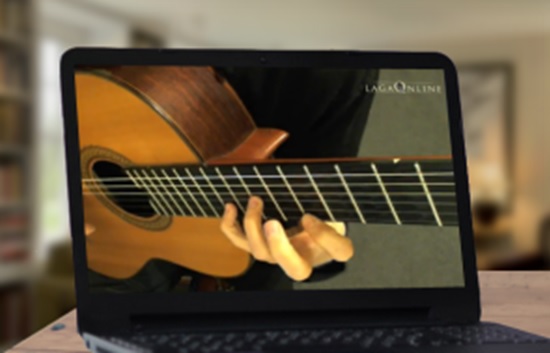
Guitar Lessons for Beginners: Learn the basics such as the right way to hold, learn to play notes, chords, scales, strum, licks, riffs, songs, solos, and more. Useful books, methods, resources, and tips to help you learn to play the guitar better and faster.
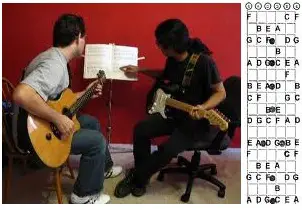
Various Methods & Resources for Guitar Learning
Here are the various methods that you could use to learn to play the guitar:
 Taking lessons from a guitar tutor (private lessons or group lessons) is a popular and effective method as you get one-to-one lessons and direct feedback from an experienced person. It is always best to learn under the watchful eye of an experienced teacher who can ensure you pick up all the right habits, right from the beginning.
Taking lessons from a guitar tutor (private lessons or group lessons) is a popular and effective method as you get one-to-one lessons and direct feedback from an experienced person. It is always best to learn under the watchful eye of an experienced teacher who can ensure you pick up all the right habits, right from the beginning.
However, you can also pursue the self-learning method; it is less expensive comparatively and you can learn at your own pace and at your own place.
Learn from Books, Sheets, Tabs
You will need several guitar books, sheets to help you improve specific skills. Method books take you from the basics to the advanced stage in a structured manner (usually has a series of books). You will need books to learn songs based on various genres.
Guitar sheet music are also useful resources to learn various pieces, you just have to follow the notes and tablatures illustrated on the sheet music. Chord sheets help you learn your favorite songs and practice the various finger positions (chord sheets show you the right positions (frets) on the strings).
You can also refer to a lot of guitar tabs to learn songs.; these show what notes and chords to play. Many beginning guitar players find it easier to play songs from tabs.
Use Learning Software/Apps
You can learn from a guitar learning software/app/video course; learning online tends to be more affordable. These programs can also track and assess your progress and playing abilities, and suggests the right learning practices from the beginning. Check out the best Guitar Learning Software here.
Related: Complete guide on buying guitars.
Tips to Improve
Here are some tips that will help you master the instrument and become a good guitarist.
Use a Metronome
Most beginners usually tend to play faster, and take a lot of time to get used to maintaining the right beat. That is where a metronome really helps.
- When learning new things, play at a lower tempo initially and then speed things up. Moving your hands up and down the frets quickly, changing chord positions, should be done slowly in the beginning. Trying to do it fast right from the beginning will lend itself to several errors.
- In the beginning, learn to play popular songs that can be played with few notes/chords. As you progress, try to learn different things such as chords, scales, riffs, solos.
Learn Tabs & Music Notation
You should learn to read both – standard music notation as well as tabs (it is possible to learn both styles).
Tabs are good to communicate with guitarists but the standard music notation will let you communicate with other musicians as well.
Learn Different Styles
Once you have mastered the basics, try to get familiar with other genres of music such as blues, rock, folk, country, classical, and so on. Its important to develop an overall sense of music, including a good grounding in music theory,
Related: recording setup at home.
Guitar Basics
How to Hold a Guitar the Right Way
The first thing you should know is to hold the guitar right.
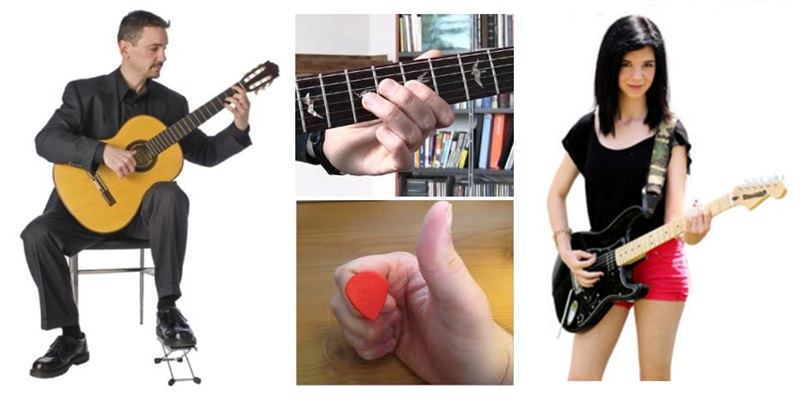
If you prefer to stand and play, you need to hold the guitar in a way that the back of the guitar touches your stomach or chest area. The neck of the guitar should be parallel to the floor and the thickest string should be closest to your face and the thinnest string should be close to the floor. Make sure that your forearms are angled outwards to the top corner of the guitar which will help you move your fingers smoothly over the strings.
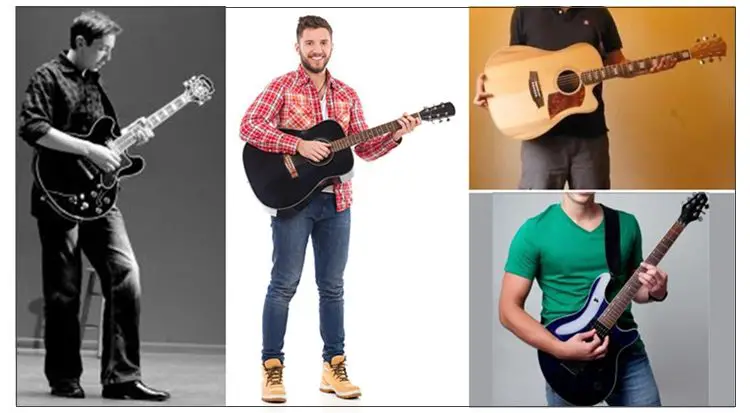
Related: Use straps to hold the guitar.
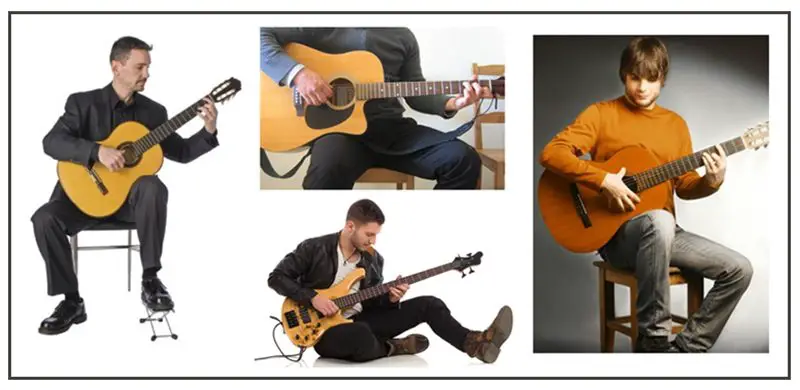
If you prefer to sit and play, you should hold the guitar in such a way that the guitar rests on at least one of your legs. The back of the guitar should touch your chest/stomach region and your left arm (if you are right handed) should hold the neck of the guitar and the right hand can be rested on the guitar to play the strings. If you are right-handed, the guitar will rest on your right leg and vice versa if you are left-handed.
Make sure that your knees are high enough to support the guitar. Make sure that your feet are flat and firmly rested on the ground.
If you are strumming with your right hand, rest the guitar on the right lap (leg) and vice versa. Your elbows should point out to the top corner of the guitar so that your writ and fingers can move easily on the strings of the guitar.
While holding the neck of the guitar, your thumb should be rested comfortably on the edge of the guitar at the top. Make sure that your wrists are not hanging too low and are relaxed.
How to Hold a Guitar Pick
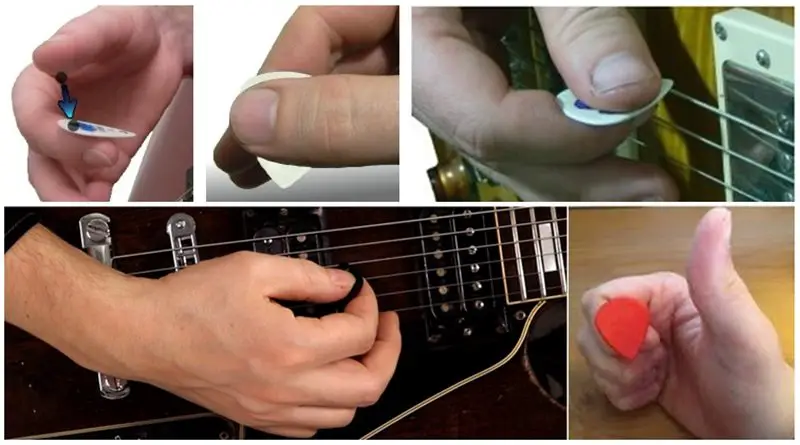
Most beginners usually start playing the guitar (strumming) using a guitar pick. There are other guitar playing techniques where you don’t require a pick, but usually that’s done when you have some experience playing the guitar.
Most beginners straightaway (instinctively) hold the pick/plectrum between the tips of their thumb and index finger, when they first use a pick.
But that is not the right way to hold a pick.
Here’s how to hold a guitar pick, and use it to play the guitar.
Place your guitar pick between your thumb and index finger. The pick should be located behind the knuckles. The pointed end of the pick should point away from your fist, and should protrude by about a half an inch.
Place your picking hand over the soundhole (of acoustic guitar), or over the body (of electric guitar), with the fingers hovering over the strings. Use your wrist for motion (instead of using the entire arm) and strike the string.
Repeat the process several times — one stroke downward and another stroke upwards (known as ‘alternate picking’). Keep the strokes short, and use minimum motion of your picking hand. Do this to strike all the strings (one at a time).

When strumming, remember that with the downward strum, the pick is facing down, and with the upward strum, the pick has to face slightly upwards (in both the directions, the pick is at an angle of around 15-20° to the face of the guitar). Also, the pick should glide over the strings with a loose wrist.
If the angle and the pressure is not right, the pick will get caught in the strings.
Picks come in different shapes, sizes and styles. Generally, larger picks are better for strumming, and smaller picks are better for playing lead.
How to Strum a Guitar the Right Way
Strumming refers to stroking of the strings with your finger or the pick (you also play notes at the same time). You can either use a pick or your finger for strumming.
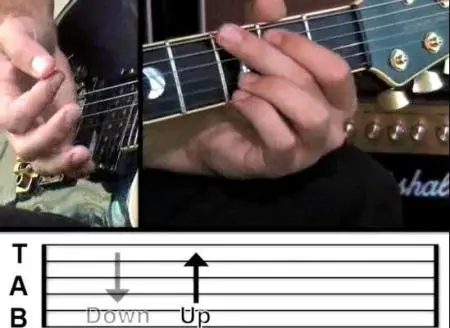
The most basic strumming pattern is strumming downward and upwards. To make it simpler, you can count 1 and 2 and 3 and 4. Every time you say ‘and’, you strum up.
Here’s how to strum the right way.
- If you are a beginner, start off by strumming softly and gradually try to go louder until you reach the peak and start descending again. And most importantly, when strumming, your arm should swing down to up continuously like pendulum without pausing.
Here are some strumming exercises that you can try on your own.
D = Downstroke
U = upstroke
Exercise 1
D D D D
1+2+3+4 +
Exercise 2
DUDUDUDU
1+2+3+4+
Exercise 3
D DU
1+2+3+4+
Exercise 4
D DU U
1+2+3+4+
Exercise 5
D DU UDU
1+2+3+4+
Finger Stretching & Strengthening Exercises

The initial phase of learning to play guitar causes pain to your fingers but the pain eases out eventually. The blisters dry up eventually and cause calluses. The calluses keep building up making your fingertips thick and you won’t feel the pain anymore after that.
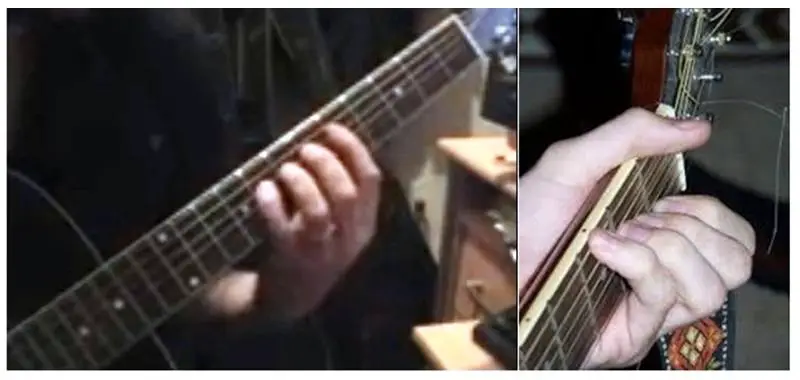
 Tips to protect fingers for Beginners
Tips to protect fingers for Beginners
- Avoid washing your hands or taking a shower just before playing the guitar. Washing your hands softens the fingertips, which could in turn make playing the guitar all the more painful.
- Long nails will make it difficult for you to grow calluses and may not even sound good when you play.
- Playing the guitar regularly itself is a good exercise to strengthen your fingers. The more you play the more flexible your fingers become.
- If you have been playing for a month or so, and if your fingers still hurt, replace your strings with a medium or light string gauge.
- Another way to ease the pain is to rub your finger tips on a surface such as carpet after every practice session, and pretty soon your calluses should become strong.

You should also do finger strengthening exercises to strengthen your fingers and wrists for playing guitar better.
Before you begin your practice session, its a good idea to warm-up your fingers before moving on to the complicated things. With more practice, you should easily be able to move your fingers across, up and down the frets.
Effective Guitar Practice Routines
Warm up your fingers; spend at least 5 minutes stretching your fingers, hands, wrist, and forearms; good for loosening up your muscles and for developing endurance.
Use a metronome to maintain the right tempo.
Practice Chromatic Scales regularly, and soon you’ll be able to zip around the fret-board in no time.
This is one of the best exercises to increase your speed and dexterity.
E|—————————————–1-2-3-4———-|
B|———————————1-2-3-4——————|
G|————————-1-2-3-4————————–|
D|—————–1-2-3-4———————————-|
A|———1-2-3-4——————————————|
E|-1-2-3-4————————————————–|
Once you play this then, reverse it:
E|-1-2-3-4——————————————|
B|———1-2-3-4———————————-|
G|—————–1-2-3-4————————–|
D|————————-1-2-3-4——————|
A|———————————1-2-3-4———-|
E|—————————————–1-2-3-4–|
Your guitar practice should include a mix of technical exercises, practicing old repertoire, improving technique, learning new songs.
Take regular breaks: Rather than having a non-stop session for two hours, its best to break it into shorter sessions, say 20 to 30 min each, separated by 2-3 min of rest.
Guitar Lessons
Guitar Music Theory
Every beginner has to start with learning the musical notes.
The notes on guitar fretboard the notes are distributed in 2 dimensions (up and down as well as sideways) over six plus strings.
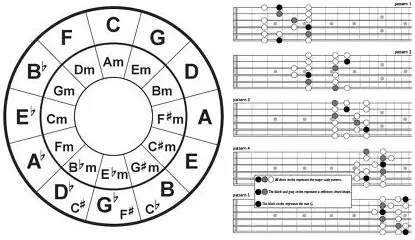
Music Notation
Knowing the notes on the fretboard is definitely helpful but you should also familiarize yourself with the standard Music Notation.
Standard music notation depicts any song in a way so that it can be read by any instrumentalist or singer. It has its standard way of denoting the notes, their length, the key, the rhythm, the chords, the tempo, etc. on a sheet of music.
Knowing how to read music notation helps you to play any musical piece without having heard it before. The notation will tell you how to play the piece. Though for playing guitar, most players use the guitar tablature (tab) which is comparatively easier to understand.
Guitar tab is an easier way of denoting guitar music, preferred my most musicians. It is used to write chords, arpeggios, lead guitar riffs, lead breaks. Guitar tabs are numbers written on 6 horizontal lines. The horizontal lines correspond to the six strings on a guitar and the number indicates what fret needs to be played on that string.
Understanding the Guitar Fretboard
Understanding the Guitar Fretboard is the key element of mastering guitar music theory. By learning the notes on the entire fretboard, you will be able to play scales & chords easily and compose more effectively.
There are very few guitarists’ who actually know all the notes on the guitar fretboard & their relationships with each other. So you should definitely aim to be one of them. Learn more here…
Scales are basically a set of unique related notes which are used to create riffs, chords and even instrumentals. The chromatic Scale is the only scale that uses all the 12 different notes found in western music.
Guitar Notes
Here you will learn to play the notes on the guitar and know the various guitar string names. Mastering the fretboard is essential to get a good grasp on Guitar Music Theory; all notes, scales, chords and progressions are learned on the fretboard.
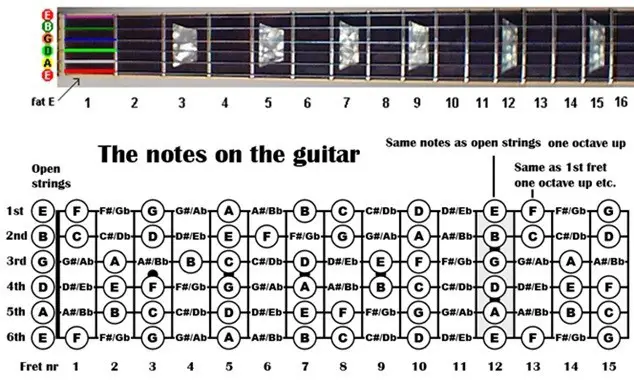
Mastering the fretboard will help you have better sight-reading skills, learn scales & chords better (and help improve improvisation), help you play chords and harmonize better.
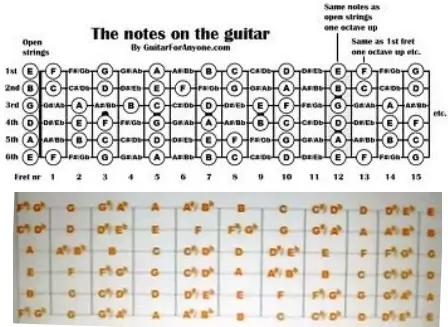
The strings are laid down in a similar manner on the Electric, Acoustic, and Bass Guitar (although the bass has fewer strings). So, the electric guitar notes, acoustic guitar notes and bass guitar notes are named in a similar manner.
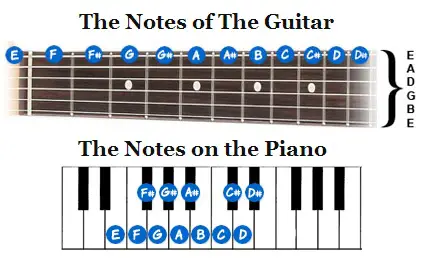
In traditional music theory, the notes are named as: A, B, C, D, E, F, and G (Main notes). In addition, you also have the sharps and flats, and they fall between these main notes. For example C#, G#, Bb, Eb, and so on.
But then finding the notes on a guitar requires a slightly different approach. It’s not exactly the same as reading notes on sheet music.
On a guitar, you can play the same notes in different ways, so just putting the neck alongside a musical notation sheet is not going to work.
Here’s how the notes can be mapped to the frets on the neck (guitar notes on neck):
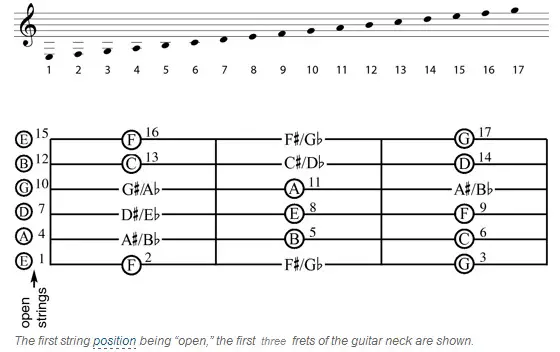
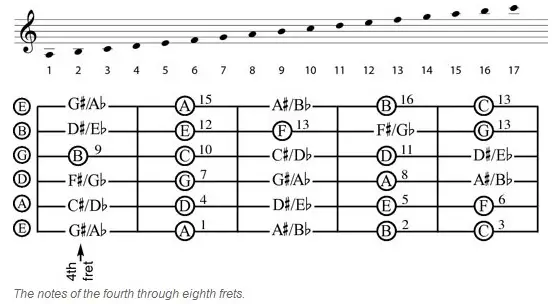
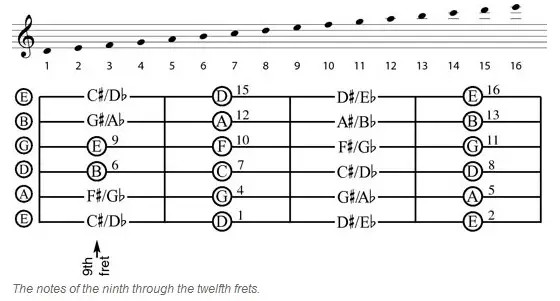
Guitar Keys, Scales and Chords (Relationship)
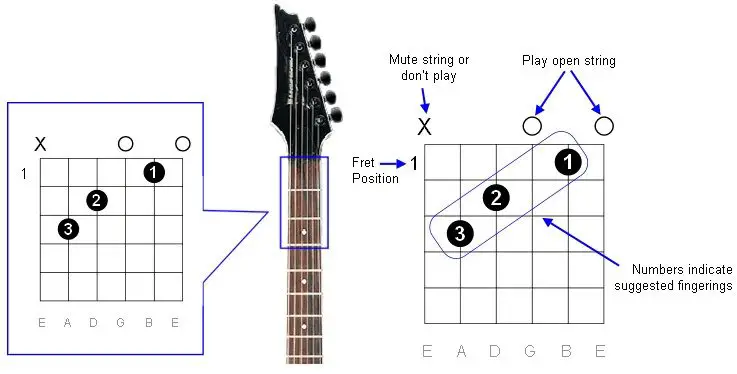
Guitar scales are a group of related sequence of notes that are played in an ascending or descending order.
The five primary guitar scales which you should know and will form the foundation of your picking technique.
- Major Scale
- Minor Scale
- The Blues Scale
- Minor Pentatonic
- Major Pentatonic Scale
Get started with these to begin with.
The best and quickest way for new guitar players to develop individual finger strength is to play a couple of scales at different speeds each day. Scales also help train your ears to recognize common note combinations.
Scales will grow the strength and flexibility on the fingers of your fretting hand. Scales will also help you develop a solid alternate picking technique in your strumming hand. Finally, scales are especially helpful for developing good coordination between the two hands, which you will definitely need as your skill becomes more advanced.
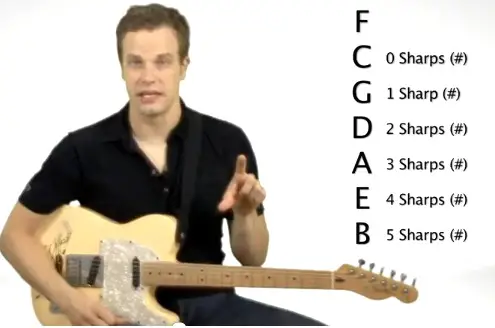
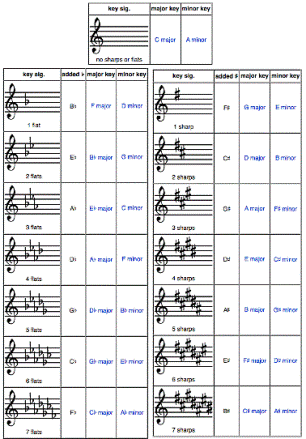
Root note of the scale simply means the primary note around which the scale is built. The fret that your root note is played on determines what key you are playing in. So if you play this scale so that the first root note falls on the fifth fret you’re playing the A major scale.
Read: all about Key signatures / scales in music
Guitar Reference Charts & Posters (Scales, Chords)
Guitar Reference Charts & Posters are useful to brush up on your music theory; fingerboard/notation, scales, chords and more, all in one glance.
Guitar Reference Poster v2
Guitar chords and scales poster printed on 100lb glossy stock poster paper. Great for Guitar Players, Teachers and Songwriters.
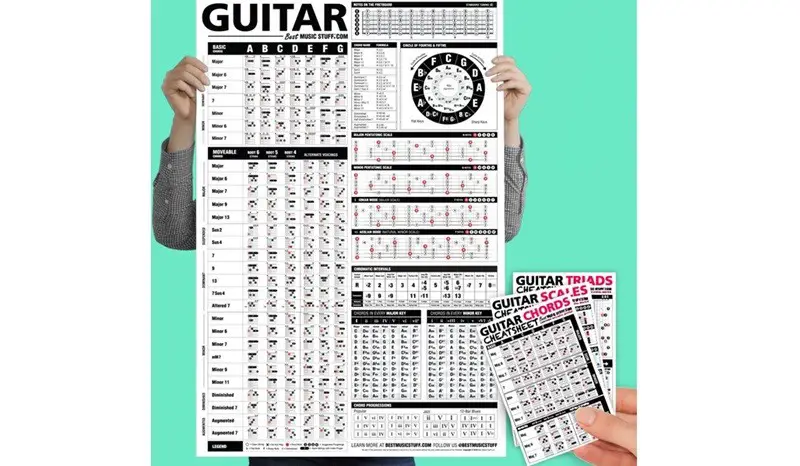
Includes the following products:
- Guitar Reference Poster 24″ x 36″
- Guitar Chords Cheatsheet: 49 Open Chords, 84 Moveable Chords, 4 Inch by 6 Inch
- Double Sided Guitar Scales Cheatsheet: Major Pentatonic Scale, Minor Pentatonic Scale, Blues Scale, Major Scale (Ionian), Dorian Mode, Phrygian Mode, Lydian Mode, Mixolydian Mode, Natural Minor (Aeolian), Locrian Mode, Harmonic Minor Scale, Melodic Minor Scale Guitar Triads Cheatsheet
- Major Triads, Minor Triads, E A D String Triads, A D G String Triads, D G B String Triads, G B E String Triads, Root Position Triads, 1st Inversion Triads, 2nd Inversion Triads, Triads (all Strings), Up The Fretboard Triads, Across The Fretboard Triads
- Buy on Amazon
Guitar Scale Wall Chart (Mel Bay)
This guitar wall chart contains a complete fingerboard/notation diagram and shows fingering grid diagrams for major and minor scales (harmonic, melodic and Hungarian), pentatonic and blues scales and modes.
Dimensions: 24 inches long by 35 inches wide.
Includes LOT of basic yet important information; good to glance at during your practice session.
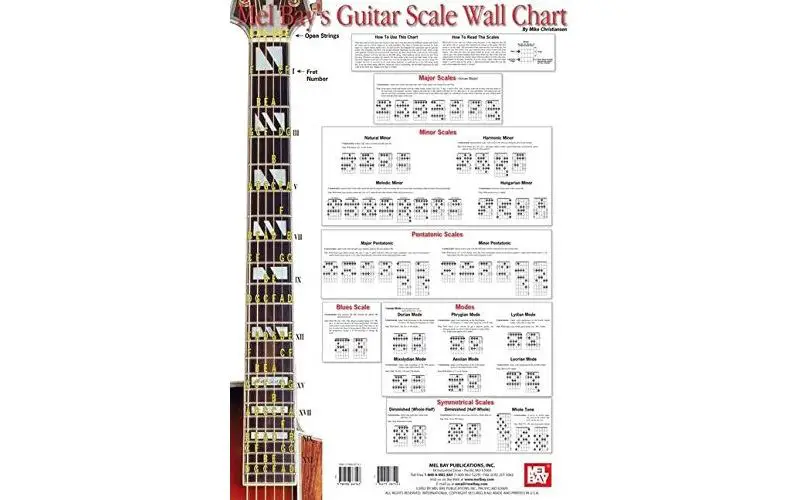
In case you have been putting in the fforts to improve guitar and music theory, you should buy this chart.
Buy on Amazon
Guitar Chords
A chord is a combination of notes played simultaneously so that you get a fuller & richer sound, compared to playing each note individually. Chords are important so that you can learn to harmonize a melody, or even to accompany a singer.
Most chords involve at least three notes played together, while some may use even more. Also, chords usually involve playing multiple strings at the same time.
Chords are set of notes played together to enhance the overall sound. There are various types of chords such as Major, Minor, Augmented, Diminished and many more, which you will learn over due course of time.
Here’s how to read any guitar chord diagram.
Chord Fingering:
1 = Index Finger
2 = Middle Finger
3 = Ring Finger
4 = Little Finger (Pinky)

Learn to Play Major and Minor Chords on Guitar
Chords are usually constructed by stacking thirds over the notes from the scales and modes. A third is a musical interval which is third note from the root.
For example, in the scale of C major, to find the third note from the root (note C), we move three notes (C D E) which brings us to the third note (note E). In this case, the distance from C to E is a third. You can read more on chords here, including how to construct chords.
Here’s how to play the most basic major and minor chords; with this, you should be able to learn the basics of major/minor chords.
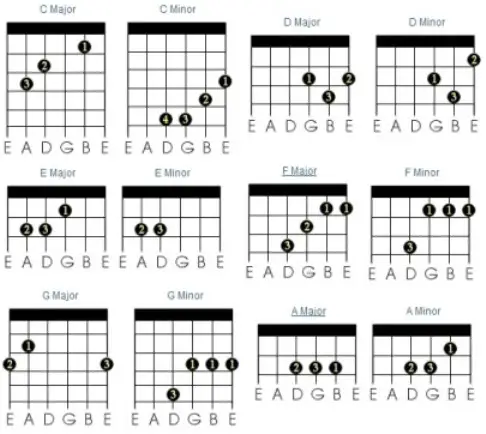
One of the very first chords that you are going to learn to play on the guitar is going to be a major chord.
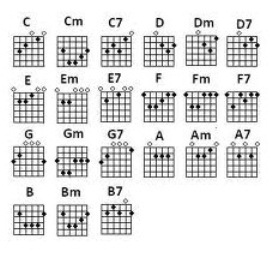
Here are the various major chords that you can play on the Guitar:
| Chord Name | Root Note | Major third | Fifth Note |
| C | C | E | G |
| D | D | F♯ | A |
| E | E | G♯ | B |
| F | F | A | C |
| G | G | B | D |
| A | A | C♯ | E |
| B | B | D♯ | F♯ |
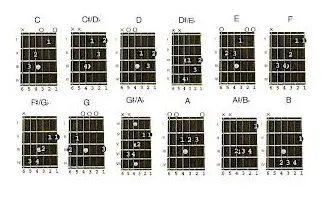
There are 12 major chords to be learnt, but you’ll obviously start with a handful. By the way, it is possible to play several songs using just a handful of chords.
So don’t let the thought of learning so many chords deter you.
Learn to play the basic major chords with this video. See how to play the basic major chords G, C, D and how to apply it to a song. If you always wanted to play the chords on a guitar, you can start doing now watching this video.
Beginner Guitar Lesson: How to Play C, D, E Chords
Here’s how to play the C, D, & E chord in the first position.
You press all three strings down with your third or fourth finger, and its good to practice both ways. To have some variety, try playing the notes one at a time while holding the chord, instead of strumming.
I don’t think it should take a lot of time for you to learn this beginner guitar lesson on how to play C, D, E Chords. There are many more guitar tutorials on this website, so do check them out as well.
Play Minor chords on Guitar
A minor chord has a sad tone to it compared to a major chord.
A C minor guitar chord can be played in many places on the neck but the open position is played on the first three frets. Form and play this chord easily with tips from an experienced music instructor in this free guitar lesson video.
Doubling the Notes
Because you can have the same notes on different strings of the guitar, experienced players often double the notes in chord, thereby increasing the volume of sound, and also add chorusing and depth to the overall sound. In most cases, the doubled notes also changes the chordal timbre.
You may double the Notes at identical pitches or in different octaves.
Most of the time, guitar players double the third interval (major third or minor third) to make it clear what chord they’re playing (major or minor) on the guitar.
Constructing a Tetrad (seventh chords)
If we count four notes – always in thirds – we’re gonna have a TETRAD (also called a seventh chord).
The process is the same as when we were constructing triads, but now we go up another third.
So, the tetrads will be these:
- from C: C E G B;
- from D: D F A C;
- from E: E G B D;
- from F: F A C E;
- from G: G B D F;
- from A: A C E G;
- and from B: B D F A.
Triad and Tetrad
The thirds between the notes in the triads and tetrads don’t have exactly the same distances in terms of semitones.
For example, in the first chord we built, the triad formed by the notes C E G, the first two notes (C E) are two whole-tones apart from each other. But in the second third (E G) the notes are just one whole-tone plus a semitone apart from each other.
The first case is called a major third; the second case is a minor third.
So, the triads will be formed by two thirds that can be major or minor, and the triads formed can be categorized in four basic types, or families.
The following triads are the more basic & commonly used ones (there are many more):
- MAJOR TRIAD: formed by a major third plus a minor third;
- MINOR TRIAD: formed by a minor third plus a major third;
- AUGMENTED TRIAD: formed two major thirds;
- DIMINISHED TRIAD: formed two minor thirds.
Regarding the guitar music theory of the tetrads, we have more basic types since we have one more third to consider:
- MAJOR TETRAD: formed by a major TRIAD plus a major third;
- DOMINANT TETRAD: formed by a major TRIAD plus a minor third;
- MINOR TETRAD: formed by a minor TRIAD plus a minor third;
- MAJOR AUGMENTED TETRAD: formed by an augmented TRIAD plus a major third;
- DIMINISHED TETRAD: formed by a diminished TRIAD plus a minor third;
- HALF-DIMINISHED TETRAD: formed by a diminished TRIAD plus a major third.
We have some guitar music theory special cases:
- Sixth chords: it’s quite common that the sixth note from a scale replaces the seventh in minor and major tetrads.
- Chords with suspended fourth: it’s quite common that before a major triad or a dominant tetrad, the third is replaced momentarily by the fourth note from the scale.
The easiest beginner guitar chords are definitely the open chords and the power chords, though they are used in different ways. Bar chords, on the other hand, is more for intermediate level guitar players.
- Open chord: full sounding chord that sounds great when strummed on acoustic or classical guitar, usually played down the end of the guitar’s fretboard (towards the headstock-end).
- Power chord: Used more in rock and metal styles of guitar playing and sounds best played on electric guitar with a distortion setting on the amp.
- Only two notes are used to play a power chord; open chords may use many more notes. Because a power chord uses only two notes, it sounds simple and powerful on electric guitar, any additional notes would sound ‘mushy’ through the distortion setting.
Chord progressions: You can play many popular songs by using just the chord progression: C –Am- Dm-G7 (you need to know only four chords).
Playing Guitar in Various Styles
Learn to Play Blues Guitar
Blues forms the basis of various other styles of music such as Rock and Jazz. The 12-Bar Blues is one of the most important chord progressions in music, that will also help you to learn other chord progressions.
Learn to Play Rock Guitar
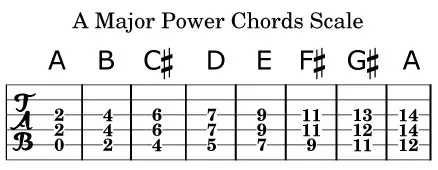 The popularity of most rock guitar based songs is because of the use of power chords, which are two or three string distorted sounding chords.
The popularity of most rock guitar based songs is because of the use of power chords, which are two or three string distorted sounding chords.
Other popular rock guitar techniques that you need to learn include sliding, string-bending, pull-offs, vibrato and hammer-ons.
Learn to Play Bass Guitar
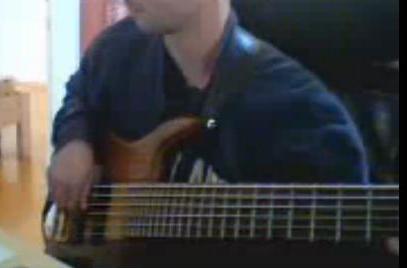 Take any song for instance, and you will find a bass track that provides the rhythmic pulse to the songs, besides the drums. The bass track is often the glue that holds the music together.
Take any song for instance, and you will find a bass track that provides the rhythmic pulse to the songs, besides the drums. The bass track is often the glue that holds the music together.
Bass guitars have fewer and thicker strings; the thicker strings produce the booming bass sounds.
A typical bass guitar has four strings. The uppermost string is G, followed by D string, followed by A, and lastly the E string.
Unlike traditional chords, where you play chords, you use the bass guitar to play rhythmic notes, and not for chords.
Beautiful pieces of Classical Music for Guitar
Hear Beethoven’s Moonlight Sonata played on the classical guitar.
Poco Allegretto Op. 246 is a easy song, great for beginners classical guitarist.
The Fugue in G minor is a Baroque period/style musical composition written by German composer Johann Sebastian Bach. It is extremely popular with guitar players today.
The famous study no. 5 for classical guitar composed by Fernando Sor.
More Guitar Playing Techniques
Learn to Play Fingerstyle Guitar
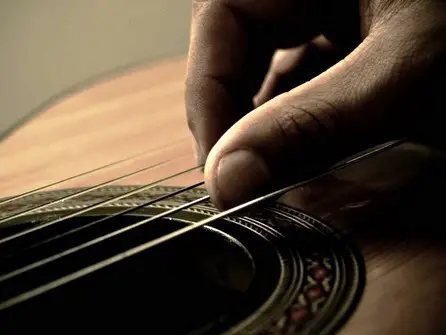 Fingerstyle guitar (also known as fingerpicking) is the technique of playing the guitar by plucking the strings directly with the fingertips, fingernails, or picks attached to fingers, as opposed to using a a plectrum.
Fingerstyle guitar (also known as fingerpicking) is the technique of playing the guitar by plucking the strings directly with the fingertips, fingernails, or picks attached to fingers, as opposed to using a a plectrum.
Its not a style (not a genre of music), its a technique of playing!
Here’s how to pluck the strings: Center the palm of your picking hand over the sound hole (acoustic) or pick-ups (electric) of the guitar. Curl your fingers and thumb at your second knuckle, and turn your hand so that your fingertips rest underneath the strings (so your second knuckles point towards the floor).
In fingerpicking, when changing chords, usually the thumb moves to play the bass strings when the chord changes, while the three remaining fingers remain stationary – playing the same string.
- Its important that your hand be in a loose claw-shape, don’t straighten out your fingers
- Your palm should move very little, all movement should be done with fingers.
- Your fingers should always remain curled, and the motion should come primarily from the second knuckle down.
- The fingers should return back into position once the appropriate note has been picked.
- If strings are ringing very quietly, you need to pick harder
There are some guitarists who are more comfortable anchoring their pinky finger on the bridge of the guitar, while using the other fingers to pick the strings (actually nothing wrong with it). Feel free to experiment with both methods and choose whatever is more comfortable to you.
Although the original fingerstyle Guitar is the Classical (nylon string Guitar) and some guitars are better setup to give you better Fingerstyle Guitar playing ability, the fact is that you can play Fingerstyle on any type of guitar – Acoustic, Classical and Electric Guitar.
Classical Guitar is the most popular for this style of playing, followed by Acoustic or Flat Top Steel String Guitar.
Guitar Licks
In most popular music genres, a lick is basically a pattern or phrase, consisting of a short series of notes, which is used in solos, melodic lines and even while accompanying.
Though the intention might be the same, there is a small difference between Lick and Riff.
- Riffs are usually interesting chord progressions (repeated)
- Licks are usually single-note melodic lines, and not chord progressions
However, both have been used by musicians to form the basis of entire songs.
Single-line riffs or licks are also known as Ostinatos.
Guitarists use these as they can make the song stand out, and most of the popular ones have become popular because they catch the ear of the listener.
Remember the Lick used in the hugely popular sitcom “Friends”?
It stays forever etched in the minds of the listener.
A good way to start with is to use a backing track, a looper pedal or even a buddy who could jam with you, and try to mix in licks that you already know. You can always play around with the dynamics, phrasing, and other things, to come up with your own cool stuff. You may use it during an accompanied solo chorus or during an unaccompanied solo break.
It’s important to know several blues licks for guitar if you want to start learning guitar soloing. After all, they are the essence of any guitar solo.
Here are few blues licks for guitar that you can start using right away:
These are in the key of A (minor pentatonic scale) and can be played over an A blues chord progression or a static A7 chord.
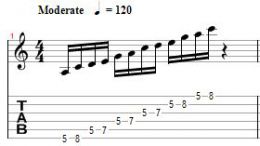
Here are a few more sample guitar licks for your practice:
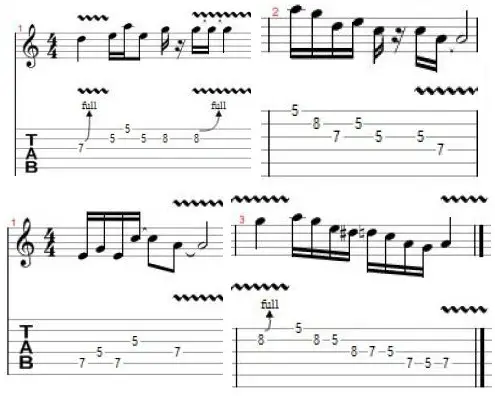
Guitar Shredding
A lead guitarist usually plays several melodic lines, whereas the rhythm guitarist provides the rhythm to the song (similar to the drummer). Its important for budding guitar players to learn timing, spacing, phrasing, so that you can play a solo that perfectly fit the tempo of the song.
Shredding is a lead playing style for the electric guitar, based on various fast soloing techniques.
There are several techniques used in shredding such as Legato, Tapping, Alternate picking, Sweep picking, String skipping.
You also need to learn to hold your pick correctly to be able to play really fast. Most pros hold the pick in between the thumb, curl their index finger up, with a bit of the pick sticking out. It will feel uncomfortable at first, but when you get it down, no other way will feel better.
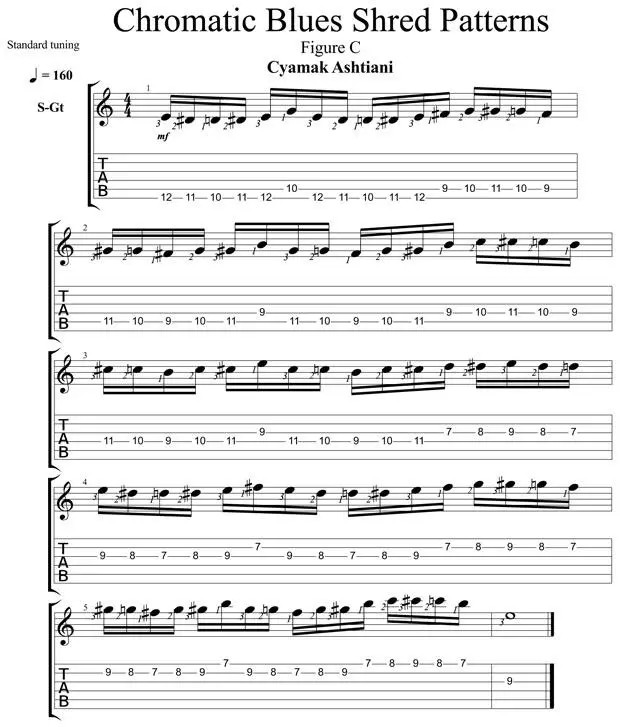
Slide Guitar
When playing slide guitar technique, instead of changing the pitch by pressing the string against frets, a slide is placed upon the string to vary its vibrating length, and pitch. This slide can then be moved along the string without lifting, creating continuous transitions in pitch.
So assuming a right-handed player and guitar, you could place the guitar in a couple of positions and play it.
The first technique is where you hold the guitar in the normal position, and use a slide called a bottleneck on one of the fingers of the left hand; this is known as bottleneck guitar.
Second is where the guitar is held horizontally, facing upwards and the bass strings toward the player, and you use a slide called a “steel” held in the left hand; this is known as “lap steel guitar”.
Slides are widely available in different designs, materials, and sizes, and what you choose also depends on other factors such as the type of guitar, string height and gauge, amplification set up, whether you’re recording or performing live, playing solo or in a band context, and so on.
Learn To Play Bar Chords
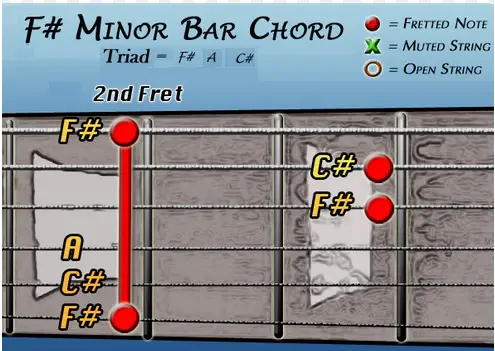 When playing barred chords, you press multiple strings using one finger (like a bar). Top Reasons to Learn Bar Chords:
When playing barred chords, you press multiple strings using one finger (like a bar). Top Reasons to Learn Bar Chords:
-
Bar chords opens up the rest of the neck to the guitar player. Though open chords are great, if you want to move up the fretboard, with open chords you either need to use a capo, or you need to be skillful to know which strings you’re pressing. If you want to strum, this often means using either — advanced left hand muting technique or just the top or bottom few strings, both of which leads to a less complete sound.
-
Using bar chords, you can play all six strings all the way up the fretboard.
-
Switching between bar chords usually require less finger movement (in many cases that’s true).While playing most songs, you need to switch from one chords to the other with faster speed; but with bar chords, switching between chords can require less finger movement.
-
Barred chords sound different than open chords (not necessarily good or bad, its just different), and that is another great reason to use bar chords.
As a beginner, you should first learn open chords and then move onto barre chords. The good thing about barre chords is that you only need to learn a few shapes (as they are moveable chords – up and down the fret-board). The same chord pattern is used and you just have to move along the guitar neck to start on any root note (with practice you will be able to do it easily).
Sight Reading Guitar
Learning to Sight-Read on the Guitar may seem like a challenging think initially but its something worth pursuing, as it will help you play some great music that has been written or adapted for guitar, besides allowing you to play with other musicians.
Though there are many guitarists who play well even without being able to read notes, being able to sight read has its own advantages.
There is a lot of great music that is written or adapted specifically for the guitar. If you are able to sight read, you will be able to learn these songs and increase your repertoire.
How about collaborating with other musicians? If you can sight-read you will be able to communicate and work with musicians who play other instruments.
It will also give you the confidence to appear for some useful exams which could help you in the future, in case you decide to take up a music teaching job. It will open up more avenues for you.
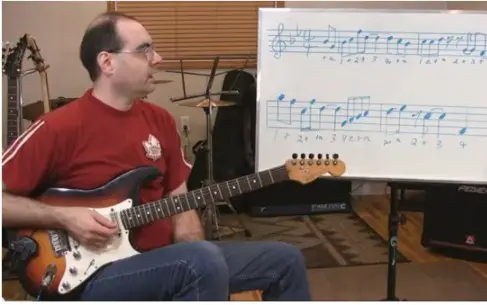
Most guitar enthusiasts try comparing sight-reading on guitar with other instruments like the Piano and feel that sight-reading on guitar is more difficult than other instruments.
Their argument is that unlike other instruments like piano where you go in a liner manner – that is either up or down while playing notes, in case of playing guitar you can go side-to-side on the guitar in addition to going up and down. Because of the way the strings are set up on a guitar, there are multiple ways to play the exact same note, which makes it a bit difficult to sight-read on the guitar.
Because of the challenges faced by many wannabe guitarists to sight-read guitar, an alternate form of notation known as “guitar tabs” was developed to solve the complications of the guitar fretboard. This method of reading guitar notes is also quite popular among the guitar playing fraternity.
However, sight-reading is not as difficult at is made out to be my many; on a piano you have to sight-read for 2 hands at the same time, but then several students are able to do it with practice. So same applies to guitar as well. With regular practice your guitar sight reading will become much better and you can easily read from several Music Sheets.
Learn to Play Guitar by Ear
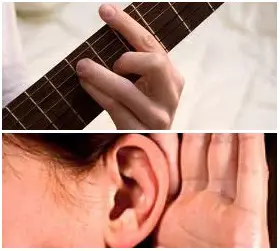 Learning to Play Guitar by Ear is another method of learning, as opposed to the traditional sight reading based guitar lessons. Lot of guitarists have learnt to play guitar this way and you too can learn it if you approach it correctly.
Learning to Play Guitar by Ear is another method of learning, as opposed to the traditional sight reading based guitar lessons. Lot of guitarists have learnt to play guitar this way and you too can learn it if you approach it correctly.
You need to know the basics of guitar before you can learn to play by ear. You need to know how to play the various guitar notes, major and minor scales.
Once you have this, get you favorite songs that you wish to play (begin with the easier ones though) and start listening to them. Once you know the melody of the song, break it down into various small sections and try learning them one at a time until you get the melody, chords and the riffs correct.
With regular practice you will be able to play even tough songs by just listening to them.
Bad Guitar Habits to Avoid While Playing
Bad guitar habits can creep into your playing as a beginner, while learning to play guitar music or chords. Here are things to watch out for and avoid.
- Make sure your guitar is tuned properly. Without tuning, the guitar just sounds terrible. So learn to tune your guitar and change your strings.
- Holding the pick the right way. You should hold your pick with your thumb and the index finger.
- Incorrect finger positions are a bad way of playing the guitar. Your thumb position, index finger etc., are all very important when you play the guitar.
- Avoid looking at your fingers while playing, as it helps to remember the different chords better, and familiarizes your hands with the different frets.
- Slouching while sitting and playing your guitar not only effects your posture and back but also looks bad. So, sit or stand straight while playing the guitar.
- Long finger nails are an absolute no except if you are learning to play on a classical guitar. Otherwise, you should cut your nails short and not allow them to grow beyond your fingertips. Long nails make it impossible to play the chords and the string bends.
- Many of you don’t wear a guitar strap. You should always wear one and tighten it around your shoulder so that the guitar is held in the right position and doesn’t keep moving while you are playing.
Best Guitar Books
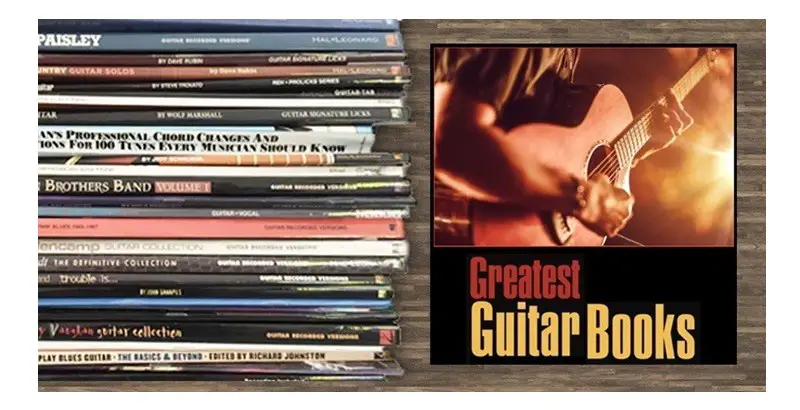 Best guitar books that cover a range of styles and subjects, for beginners and for more experienced players, perfect for the self taught guitarist. These books focus on not only making you a better guitar player, but a better musician overall.
Best guitar books that cover a range of styles and subjects, for beginners and for more experienced players, perfect for the self taught guitarist. These books focus on not only making you a better guitar player, but a better musician overall.
Have you always wanted to play guitar? Think of Jimi Hendrix wailing away on his Stratocaster. . . Chuck Berry duck-walking across the stage to “Johnny B. Goode”. . .B.B. King making his “Lucille” cry the blues. No doubt about it—guitars are cool. Here, you will find guitar books on beginning guitar, music theory, jazz guitar, sight-reading, lead playing, and more.
Most guitar books nowadays come with supplemental music for an enhanced learning experience for users.
Types of Guitar Books
- Music Tab Books: Great for learning popular songs.
- Method/Skill Books: These focus more on technique and skills.
Hal Leonard Guitar Method, Complete Edition
This book starts with the beginner topics like how to read music, chords, different scales and keys, and then moves on to advanced techniques and music theory in the later books. The diagrams in the book are large in size (beginners love it), and there’s lots of useful information in it, the play along CDs are useful too. This book series is meant for beginners and intermediate players who want to learn guitar.
Fretboard Logic SE
This is not a typical guitar method book, it focusses on the several practical application of learning guitar. This book explains the fretboard layout by focusing on the five basic chords and its root notes. The chords are C, A, G, E, and D, (“CAGED” method). The book also includes enough information on arpeggios, tunings, and scales that will ensure you also brush up on music theory.
The 50 Greatest Guitar Books
The 50 Greatest Guitar Books is part guitar instruction, part music appreciation, and part literary criticism. It is a superb reference book, and also a great tutorial book. Over hundred guitar lessons – in all styles – provide beginner, intermediate, and advanced players with knowledge, insight, and inspiration. You’ll also find helpful insightful commentaries.
Guitar Mastery Simplified
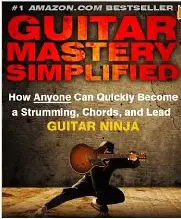 Guitar Mastery Simplified, is packed with easy & important guitar lessons that will help you take your guitar playing ability to a much higher level. Play the guitar like a guitar master and eliminate all the doubts that have been holding you back.
Guitar Mastery Simplified, is packed with easy & important guitar lessons that will help you take your guitar playing ability to a much higher level. Play the guitar like a guitar master and eliminate all the doubts that have been holding you back.
Guitar For Dummies
Guitar For Dummies 2nd Edition tells you everything a beginning or intermediate guitarist needs to know: from buying a guitar to tuning it, playing it, and caring for it, this book has it all—and you don’t even need to know how to read music.
Hal Leonard Guitar Method, Complete Edition
The Hal Leonard Guitar Method is designed for anyone learning to play acoustic or electric guitar. This super-convenient Complete Edition features the new and improved method books 1, 2 and 3 spiral-bound together, with CDs.
Guitar Aerobics
A 52-Week, One-lick-per-day Workout Program for Developing, Improving and Maintaining Guitar Technique. The guitar exercises cover several musical styles including rock, blues, jazz, metal, country, and funk. Techniques taught include alternate picking, arpeggios, sweep picking, string skipping, legato, string bending, and rhythm guitar.
The Ultimate Guitar Chord Chart
This handy booklet includes 120 of the most commonly used chords, as well as information on chord theory and easy-reference diagrams.
Guitar Fretboard Workbook
Learn to navigate the guitar neck better with this easy-to-use book. Designed from Musicians Institute core curriculum programs, it covers essential concepts for players of every level, acoustic or electric. No music reading is required.
Music Theory for Guitarists
Guitarists of all levels will find a wealth of practical music knowledge in this special book and CD package. Veteran guitarist and author Tom Kolb dispels the mysteries of music theory using plain and simple terms and diagrams. The accompanying CD provides 94 tracks of music examples, scales, modes, chords, ear training, and much more!
How to Play Guitar
Whether you want to play pop, folk, country, rock, blues, jazz, classical, or any other style of music, you will pick up the basic techniques without tedious drills and exercises. The book will teach you about: Choosing and buying a guitar, Tuning your instrument correctly, Reading sheet music, guitar music, and tablature, playing melody and more.
The Beatles Complete Chord Songbook
This great collection features all 194 songs written and sung by The Beatles, specially transcribed here for strumming guitarists, from the actual recordings, in the original keys. Each song includes chord symbols, guitar chord boxes and complete lyrics. Also features a helpful playing guide and a full discography.
Beyond Basics Fingerstyle Guitar (The Ultimate Beginner Series)
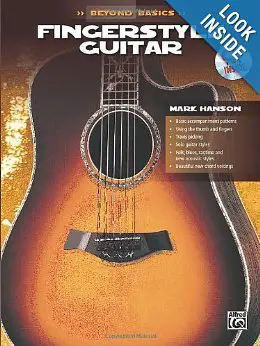 For those into fingerstyle guitar playing, this book starts with simple exercises and moves onto the more complex patterns that can be used in songs. Written by one of America’s premier fingerstyle guitarists (Mark Hanson), this book introduces you to the world of fingerpicking.
For those into fingerstyle guitar playing, this book starts with simple exercises and moves onto the more complex patterns that can be used in songs. Written by one of America’s premier fingerstyle guitarists (Mark Hanson), this book introduces you to the world of fingerpicking.
Guitar Magazines
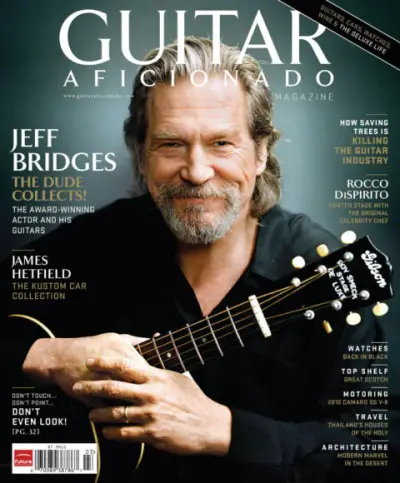 Guitar magazines are a great way to learn more about famous guitarists, their gear and their musical journey. The also contain guitar & gear reviews, album reviews, besides having guitar lessons, and at times, also have interviews of music teachers.
Guitar magazines are a great way to learn more about famous guitarists, their gear and their musical journey. The also contain guitar & gear reviews, album reviews, besides having guitar lessons, and at times, also have interviews of music teachers.
Popular guitar magazines: Premier Guitar, Guitar Player, Bass Player, Guitar World, Guitar Techniques, Fretboard Journal, Guitar & Bass, Guitar One, Total Guitar.
While these magazines do have lots of free lessons and playing tips, and suggestions on improving guitar technique, its more suited to intermediate players and above. If you’re still a beginner, I would suggest you build a collection of good guitar books to improve your game. And once in a while you can pick up a guitar magazine to get some inspiration and to stay motivated.
Popular Guitar Songs for Beginners
Too much theory can be boring so it’s important to mix them with simple guitar songs that are easy to play, it also helps reinforce the basics. Here are simple & easy first songs that you can learn to play on the guitar.
Once you know the basics of playing the guitar, it’s important to use them in songs.
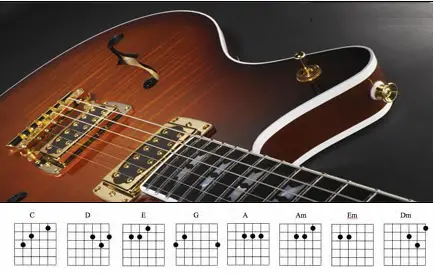
- Beginners should choose songs that ideally can be played using 3-5 basic chords, and have low tempo so that it doesn’t require fast strumming. It will also help you get a complete grasp on those simple chords, using which you can play more songs and also help you to play the complicated chords.
- How to play Hotel California on Guitar
- Eruption Guitar (by Van Halen)
- Led Zeppelin – Stairway To Heaven: Tabs / Sheet Music
Here are some good options to get started.
“More than Words” sung by Westlife has 5 simple chords such as G C D Am and Em, and the rhythm is also slow.
“Way Back into Love” by Hugh Grant uses simple chords and those are repeated throughout the duration of the song.
“Wherever You Will Go” by The Calling, good choice for those who want to experience slow rock music.
Free Fallin: For this Tom Petty classic, you need to move only a couple of fingers around to play the entire song.
I Should Have Known Better: This early Beatles song features a straightforward strum and a few basic chords.
Leaving On A Jet Plane: If you can play the G major, C major and D major chords, you’ve got all the tools you need to tackle this John Denver song.
Knockin’ on Heaven’s Door: You may already have heard the original Bob Dylan version of the song, or the Guns n’ Roses cover – both are easy to play.
House of the Rising Sun: This very old folk song features slightly advanced arpeggiated picking but the chords are pretty straightforward.
Wonderful Tonight: The chords for this Eric Clapton song are simple, and they change slowly. Once you’ve mastered the chords, you might even want to try playing the lead guitar part.
How to Play Hotel California on Guitar
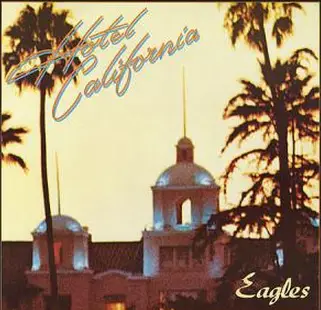 One of the most popular songs played on the guitar is Hotel California by the Eagles. Anybody who’s learning to play the guitar wants to be able to play this song at the earliest.
One of the most popular songs played on the guitar is Hotel California by the Eagles. Anybody who’s learning to play the guitar wants to be able to play this song at the earliest.
Here’s a video that demonstrates how to play the entire song and also provides all the guitar chords that you need for this sing.
Please note that is not exactly a song for the absolute beginner. If you have recently started playing the guitar, you are going to struggle to play this song. This is not very simple to play as there are many chords and you have to change between them pretty fast.
However, if you have been playing for a few months now, you can attempt this song.
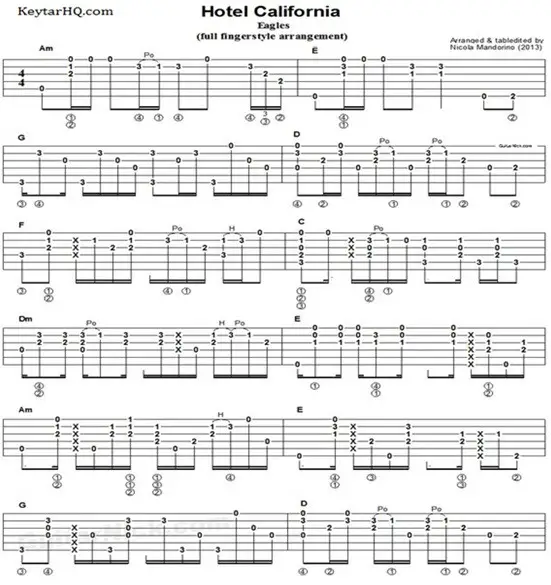
Guitar Tab for Hotel California by Eagles
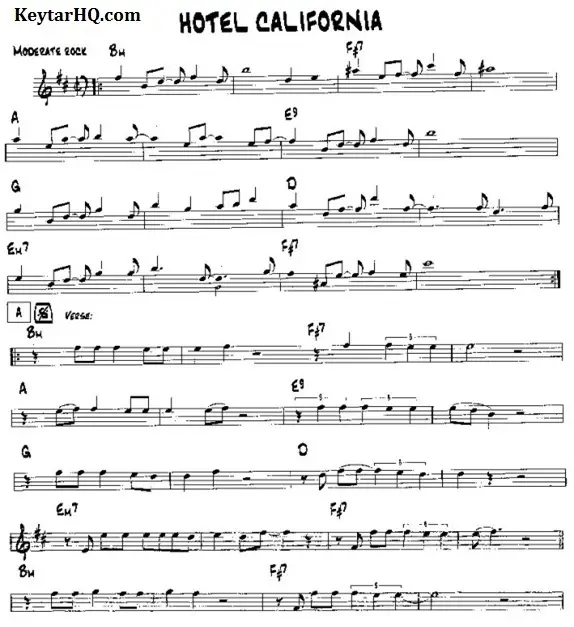
Sheet Music of Hotel California by Eagles
Led Zeppelin – Stairway To Heaven: Tabs / Sheet Music
“Stairway to Heaven” by English rock band Led Zeppelin is considered as one of the greatest rock songs of all time. Released in late 1971, the song was composed by guitarist Jimmy Page and vocalist Robert Plant.
Here are easy guitar tabs/sheet music notes to play this popular rock song.
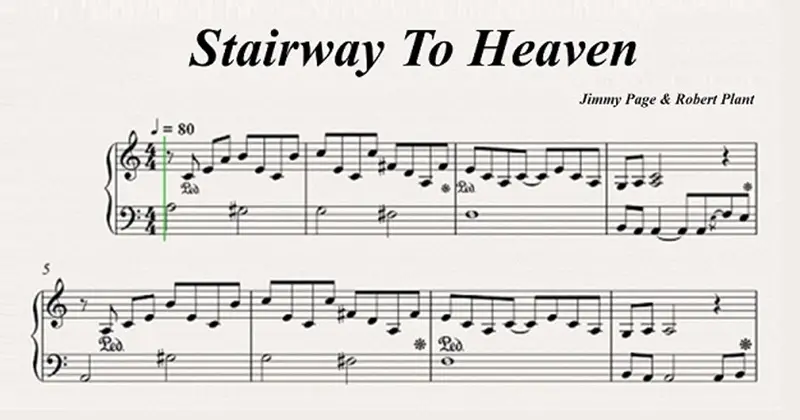
Eruption Guitar (by Van Halen)
“Eruption” is an instrumental rock guitar solo performed by the legendary Eddie Van Halen. Van Halen’s 1:42 minute genre-defining guitar solo has been hailed by many as revolutionary.
Many consider Eruption to be the greatest guitar solos of all time. No wonder every budding guitar player wants to play this amazing guitar solo.
Find free guitar tabs for Eruption by Van Halen:
Guitar Learning Software: Online Guitar Lessons
Now you can learn to play the acoustic or the electric guitar on your own using a guitar learning software/app.
You can usually expect to find the following in any guitar course:
- Collection of hundreds of lessons and plenty of practice songs, and modules such as ear training
- Playing chords, other playing techniques, such as finger-picking
- Tips on Guitar maintenance, tuning & stringing your guitar. Most software provide a built-in tuner, Metronome, electronic chord dictionary and even a digital recorder
- Master the Guitar in the comfort of your own home
Similar services if provided by a personal guitar teacher, or assuming if you buy books and them up, it will be much higher than what you would probably pay for a guitar course. So, you should definitely explore the idea of learning using online software, unless you find it difficult to learn without a personal tutor.
These products come with user-friendly navigation, better practice tools, new techniques and tunings, several practice guitar songs, and much more.
KeytarHQ editorial team includes musicians who write and review products for pianists, keyboardists, guitarists & other musicians. KeytarHQ is the best online resource for information on keyboards, pianos, synths, keytars, guitars and music gear for musicians of all abilities, ages and interests.



Leave a Reply